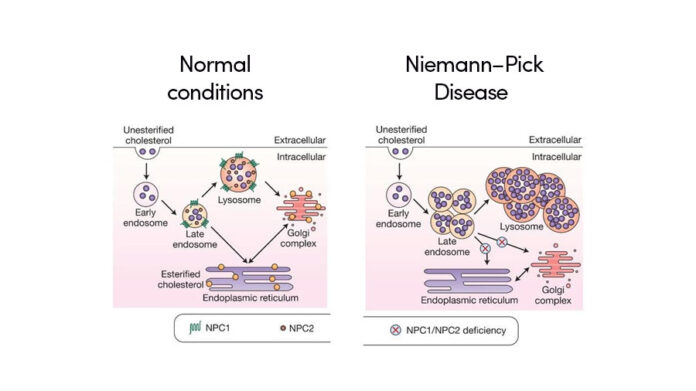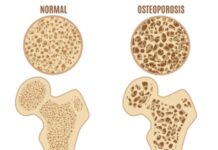Niemann-Pick disease (NPD) is a rare inherited disorder that affects the body’s ability to metabolize lipids (fats) within cells. There are several types of Niemann-Pick disease, but the two most common are type A and type B.
Symptoms of Neimann – Pick disease:
- Type A: This is the most severe form, usually appearing in infancy. Symptoms may include an enlarged liver and spleen, developmental delays, difficulty feeding, cherry-red spots in the eyes, and progressive neurologic deterioration. Children with type A NPD typically do not survive beyond early childhood.
- Type B: Symptoms are milder and often appear in childhood or adolescence. These may include an enlarged liver and spleen, respiratory issues, delayed growth, and in some cases, neurological problems. Individuals with type B NPD generally have a longer lifespan than those with type A, but the disease can still significantly affect their quality of life.
Causes:
Niemann-Pick disease is caused by mutations in genes responsible for producing enzymes involved in lipid metabolism. These mutations lead to a deficiency in these enzymes, resulting in the accumulation of lipids within cells, particularly in the liver, spleen, and brain.
Treatment:
Currently, there is no cure for Niemann-Pick disease. Treatment primarily focuses on managing symptoms and providing supportive care. This may include medications to address specific symptoms, such as respiratory issues or seizures, physical therapy to maintain mobility, and nutritional support to ensure adequate growth and development.
Prevention of Neimann – Pick disease:
Since Niemann-Pick disease is inherited, prevention strategies primarily involve genetic counseling and testing for individuals who carry a family history of the condition. Prenatal testing is also available for families at risk of passing the disease to their children. Additionally, ongoing research into gene therapy and other potential treatments may offer hope for future prevention or reversal of the disease’s progression.

































